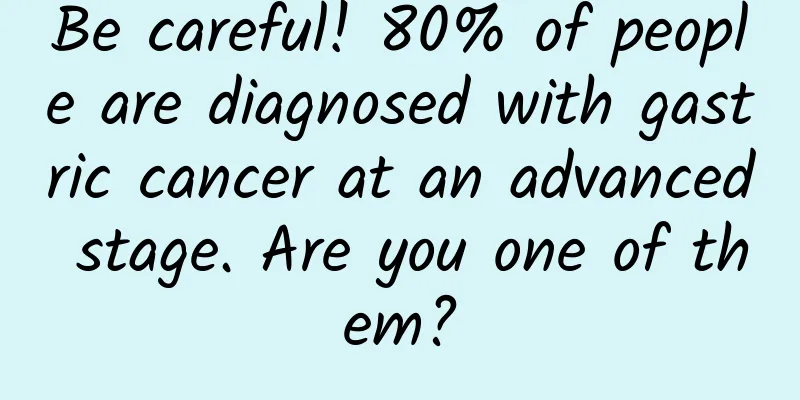A 12-year-old primary school student is in the advanced stage of lung cancer. Is it all because of drinking beverages and staying up late?

|
Rumor has it: A 12-year-old boy in Hunan was diagnosed with advanced lung cancer. His parents said that their child didn't like it very much, drank carbonated drinks when he was thirsty, and stayed up late playing with his mobile phone. It was speculated that these reasons caused the lung cancer. Real points: 1 The 12-year-old patient was diagnosed with advanced lung cancer, but the cause was not, as some media reported, due to drinking carbonated drinks, fruit juice, playing with mobile phones, staying up late, and irregular lifestyle. In addition to gene mutations, possible carcinogenic factors include secondhand smoke, radioactive radon gas, family history of lung cancer, etc., but whether they are related to this little patient needs further investigation. 2 Lung cancer is very rare in minors, but it does not mean it will not happen. Cancer is not a terminal illness, and there are many treatment options. This young patient has advanced squamous cell lung cancer, and immunotherapy combined with chemotherapy is the standard first-line treatment option. Verified by: A piece of ginger | Research Associate Professor, Department of Pathology and Laboratory Medicine, University of Pennsylvania School of Medicine Recently, Hunan Cancer Hospital admitted a 12-year-old boy. Previously, the parents found a quail egg-sized mass on the left clavicle of the little patient. After a biopsy at another hospital, the pathology report indicated that it was Ewing's sarcoma. Hunan Cancer Hospital again performed a CT-guided puncture biopsy of the right chest wall mass, and the final pathology report showed that it was low-undifferentiated squamous cell carcinoma. Based on all the examinations, the little patient was diagnosed with advanced lung cancer, the primary site of which was bronchial squamous cell carcinoma, but the ribs and clavicle were invaded by cancer cells, and the mediastinal lymph nodes were also metastatic. 1. Do teenagers really get lung cancer? Lung cancer is the most common cancer and causes the most deaths, but most patients are over 40 years old, and the incidence rate increases with age. However, this does not mean that lung cancer will not occur in teenagers. A survey of lung cancer cases in Poland found that between 2003 and 2008, 7% of patients were less than 25 years old when diagnosed. In contrast, the proportion was only 2% 20 years ago, indicating that lung cancer has a trend of younger age. There have also been changes in the subtypes of lung cancer. In the past, it was mainly small cell lung cancer, but the survey at that time found that there were more non-small cell lung cancers. Non-small cell lung cancer can be mainly divided into squamous cell carcinoma of the lung and adenocarcinoma of the lung. In the Polish data, adenocarcinoma is also more common than squamous cell carcinoma (33% vs. 10%). The 12-year-old patient mentioned above has squamous cell carcinoma and is relatively young, which is indeed a relatively rare type. However, in 2011, the University of Toledo in the United States published a case report. The patient was only 7 years old, and like the young patient in Hunan Cancer Hospital, he had squamous cell carcinoma of the lung. These cases show that although lung cancer is very rare in minors, it is also possible. 2. What caused the 12-year-old patient to have advanced lung cancer? In media reports, the patient's parents said that they spoiled their child and did not control his pocket money, so the child often used the change his mother put on the table to buy drinks and snacks. The child's mother regretted: "It's all our fault for not taking care of him. He hardly ever had breakfast, and he had to chase us to feed him for lunch and dinner before he could eat half a bowl. He basically doesn't drink water, and only drinks carbonated drinks and juice when he is thirsty!" In addition, during the interview, the media also dug up a "bad habit" of the child: he likes to play mobile games, and often secretly plays with his mobile phone late at night when his parents are asleep, which leads to frequent late nights and a very irregular lifestyle. In this regard, some media directly summarized the causes of cancer: drinking carbonated drinks and fruit juices; playing with mobile phones; staying up late and having irregular lifestyles. These lifestyle habits are indeed bad, but it is very hasty to conclude that they are the causes of advanced lung cancer. The incidence of primary lung cancer in children is extremely low, and existing studies have found that the biological characteristics of primary lung cancer that is not related to smoking are also different. Although the incidence of certain types of mutations varies with age, no carcinogenic factors or gene mutations specific to pediatric lung cancer have been found. Currently recognized carcinogenic factors for lung cancer include smoking (including secondhand smoke), radioactive radon gas, and family history of lung cancer. However, since the news did not describe the family's living habits and family history, whether lung cancer is related to these factors requires further investigation. Of course, there are many factors that cause lung cancer, and it is more likely to be the result of multiple factors. The media did not really investigate and analyze whether factors such as secondhand smoke and radon gas are the factors that cause lung cancer in young patients. Instead, they simply found some "bad living habits" to take the blame. This simple and crude way of shifting the blame will only disturb the audience. For example, the number of new crown infections and deaths in a certain country are both the highest in the world. The president of a certain country believes that the reason is that too many tests are conducted. If you follow this line of thought to formulate epidemic prevention policies, you will naturally reduce the amount of testing, thinking that this will reduce the infection of the new coronavirus. Obviously, this is completely the opposite of the way, and it is impossible to correctly solve the problem of the epidemic. 3. How to treat advanced lung cancer in young children? Since the patient is already in the advanced stage and the cancer cells have metastasized, surgery is not the preferred treatment method. Even if the cancerous tissue in the lungs is removed, the cancer cells that have metastasized to other tissues and organs will continue to cause trouble. Therefore, the preferred treatment option must be systemic treatment, which means injecting therapeutic drugs into the patient's body and delivering the drugs to various tissues and organs throughout the body through the blood circulation. In the past, systemic treatment was mainly chemotherapy, but with the advancement of medical technology, lung cancer now has more effective options such as targeted therapy and immunotherapy. In patients with lung adenocarcinoma, EGFR gene mutations are relatively common, and patients can use EGFR targeted drugs, but the 12-year-old patient has squamous cell lung cancer, targeted mutations are relatively rare, and targeted therapy is generally not suitable. However, studies now show that although the possibility of EGFR mutations is relatively small (2%~13%), some patients with squamous cell lung cancer have achieved complete remission after the mutation was detected and treated with the third-generation EGFR targeted drug Tagrisso. Therefore, EGFR mutation detection in patients with squamous cell lung cancer should not be ignored, especially for puncture biopsy samples with relatively small sampling. The news mentioned that the hospital is preparing to use chemotherapy combined with immunotherapy for young patients, which is indeed the current standard treatment. In China, the first-line treatment for metastatic squamous cell lung cancer that is now officially approved is the PD-1 antibody drug K combined with carboplatin and paclitaxel. In addition, BeiGene's PD-1 antibody drug tislelizumab combined with chemotherapy has also submitted an application for listing. If the patient has high expression of PD-L1, K drug can also be used alone for treatment without chemotherapy. It should be pointed out that in previous immunotherapy clinical trials, the patients were mainly adults, and there is no treatment data for minors. Therefore, for the treatment of 12-year-old patients, in addition to the need to adjust the dosage of the drug, there must be something worth exploring in the specific treatment plan, and it will also provide valuable experience for future treatment. It is unfortunate that a 12-year-old child has lung cancer! Fortunately, we now have more treatment options, and cancer is no longer a terminal illness. Editor of this article: zoey |
<<: Are the right-angled shoulders of female celebrities natural or concave? Can you have them too?
>>: Mouthwash, whitening strips... How to use these oral care products best?
Recommend
Can pregnant women drink yogurt every day?
After pregnancy, many women's taste buds chan...
Excessive discharge the day after intercourse
During sexual intercourse, due to sexual stimulat...
Women's menstrual bleeding
Menstrual problems are a common problem among wom...
Reasons why women are irritable
Many people believe that women are more delicate ...
How to choose dried blueberries (they are too shiny and contain vegetable oil and a lot of sugar)
...
How to treat back pain after childbirth
Some female friends suffer from postpartum diseas...
How long does it take for HPV58 to be positive?
HPV58 positive indicates HPV58 infection. HPV58 i...
Can I have miscarriage if the placenta is low?
If the placenta is low during pregnancy, it can e...
The harm of eating betel nut for girls
Betel nut, also known as Binmen, Renpin, Renlang,...
A girl has a boil on her chin
Depending on the different weather changes, we wi...
What should I do if I have gynecological diseases during pregnancy?
After a woman becomes pregnant, she is very likel...
The pros and cons of women donating blood
Now, as healthy people, we have the obligation to...
Female abdominal examination
Most abdominal examinations for female friends re...
Is it good to take a shower during menstruation?
Menstruation is a physiological characteristic of...
Children with rhinitis should be careful of complications. Scientific prevention and treatment can make breathing smoother.
Flowers are in full bloom, and it is a good time ...









